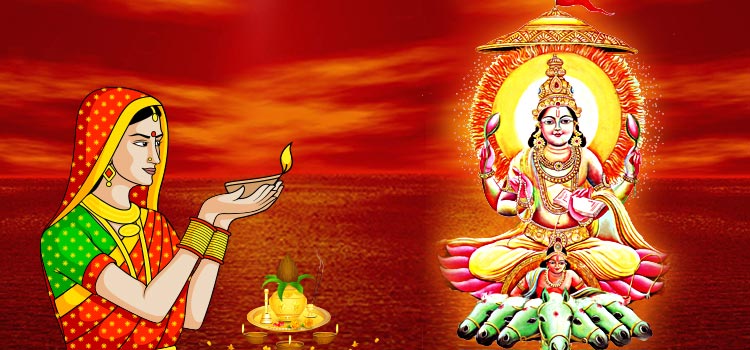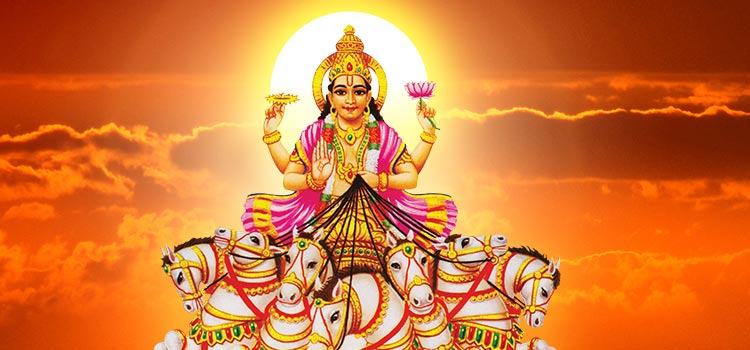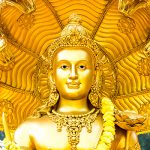Chhath Puja is an ancient Hindu festival celebrated to honor the Sun God (Surya Bhagwan). The festival is also popularly called Chhath Parva, Chhath, Chhathi, Dala Chhath and Surya Shasti depending on the region it is observed in. Chhath Puja is observed between the months of October and November, just after the Govardhan Puja. Chhath Puja pays tribute to the Sun God, as it is the light emanating from the star which is responsible for sustaining life on Earth. On this day, devotees seek the Sun God’s blessings for a healthy and prosperous life; it is also strongly believed that the early morning Sunlight has several healing properties too. Though it is celebrated mainly in the Northern regions of the country, it is equally popular in some neighboring countries like Nepal and Mauritius and those with a sizable Hindu population.
Chhath Puja 2020 Date – Friday, November 20
Yogic Philosophy of Chhath
Yogic philosophy advocates the theory that the physical exterior form of all living beings are conduits for energy which allows for the absorption of solar rays into the human body. Thus, the rituals associated with Chhath Puja conditions one for the infusion of solar energy. It is also strongly believed that ancient ‘Rishis’ used this very form of absorbing energy into the body to sustain the life force within them, without actually ingesting any liquid or solid food.
The retina of the eye absorbs solar rays and transfers this energy to the pineal gland via the optic nerves. The pineal gland along with the hypothalamus and pituitary glands are together called ‘Triveni’, and the energy absorbed form the Sun acts upon these glands too, thereby regulating the ‘Pranic’ activity of the body.
This process of ingesting energy from the Sun occurs in six stages, according to Yogic philosophy.
- Fasting- this serves to discipline the mind and detoxify the body.
- Maintaining the position of standing in a river or water body, half-submerged (Sushumna).
- Absorbing the Sun’s rays through the optic nerves and retina.
- Absorbing solar energy through the three glands (Triveni).
- The process of absorbing solar energy via the spine (Kundalini Shakti).
- This involves the body becoming a channel for energy flow to be transmitted to the whole Universe.
The Chhath festival is a period of drinking and worshiping, after abstaining and remaining out of the household for a period of four days. The person who observes this practice sleeps on the floor on a single blanket. Worship is offered without the necessity of a priest to conduct rituals and ceremonies. Prayers are offered to the rising and setting Sun, symbolically representing the cycle of birth and death.

Benefits of Chhath Puja
The purpose of observing the Chhath Puja is to inculcate a sense of mental discipline. The rituals and fast observed on this day is indicative of the purity and cleanliness one should maintain. The 36 hour fasting process serves to detoxify the body and maintain the even flow of “Prana’ within, which serves to make the person more energetic and active. Practicing meditation, pranayama, yoga and Chhath rituals, also serves to reduce harmful toxins in the body. It is also said to improve eyesight and slowing down the aging process.
The energy from sunlight is believed to cure certain infections and improving the skin tone. It also results in boosting the function of white blood cells and the secretion of hormones.
Chhath Puja rituals serve to calm the mind by regulating the flow of Pranic energy. As a result, negative energies are also flushed out. Devotees who observe the ritual with steadfast dedication also witness increased mental activity.
Effects of Sunrise and Sunset
It is widely believed that humans stand to benefit a lot from the rays of the Sun during sunrise and sunset. This explains why Chhath Puja mainly involves offering ‘Arghya’ to the Sun at dawn and at dusk.



Thank you for your sharing. I am worried that I lack creative ideas. It is your article that makes me full of hope. Thank you. But, I have a question, can you help me?